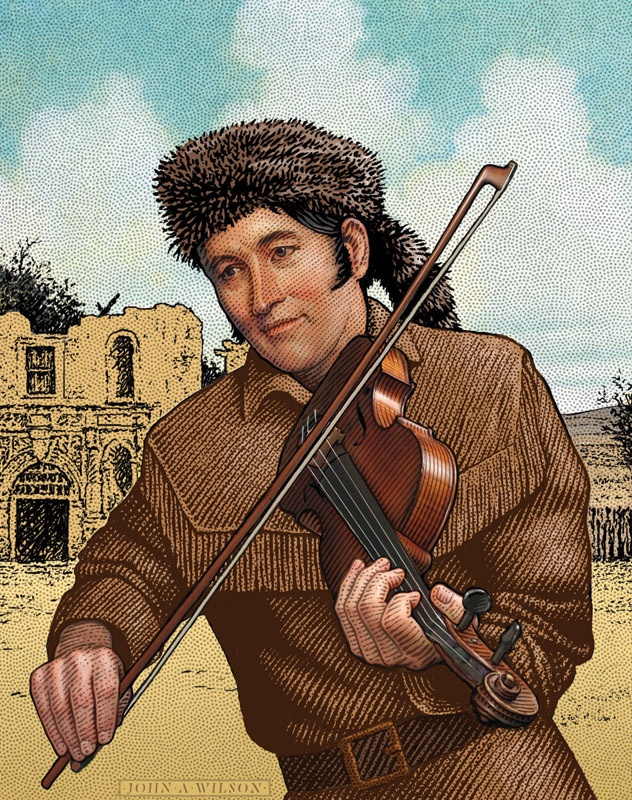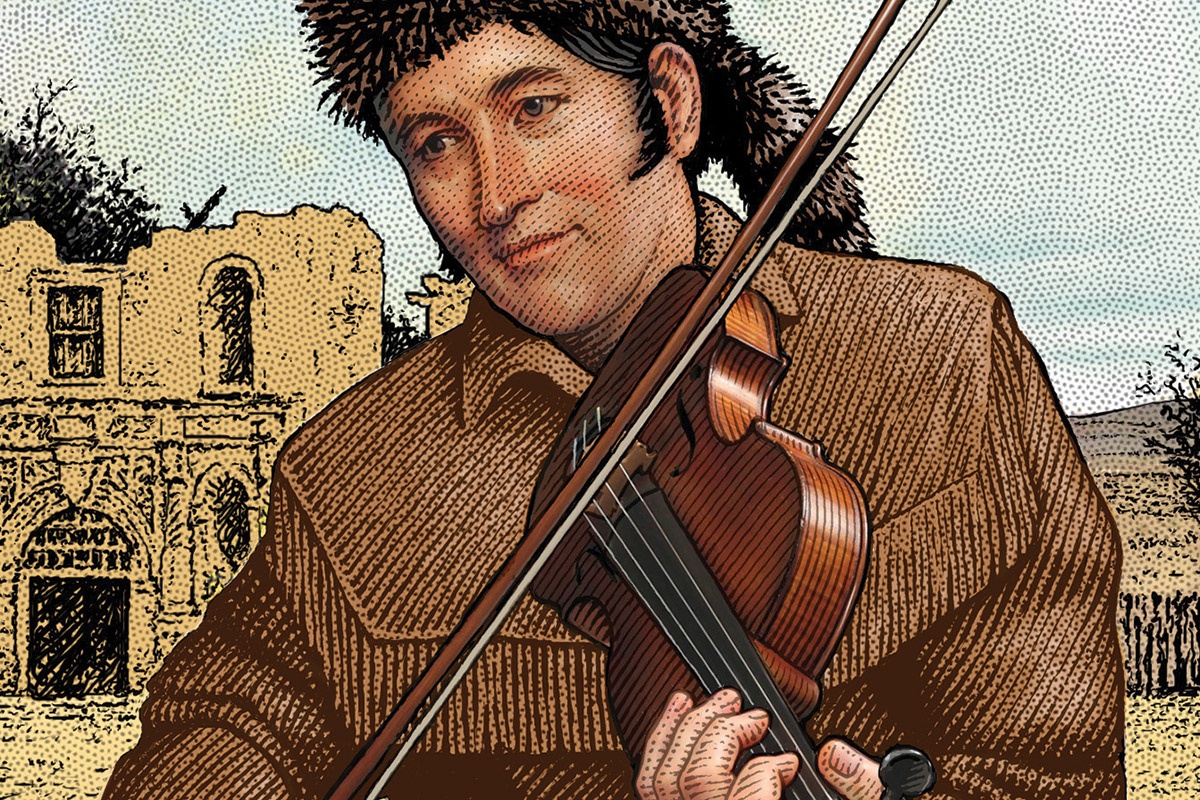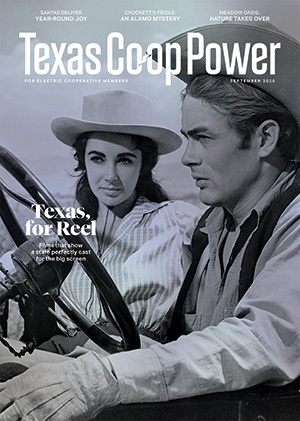David Crockett’s frontier celebrity arrived in San Antonio before he entered the city on February 5, 1836. The 1833 book Sketches and Eccentricities of Col. David Crockett of West Tennessee and the 1831 New York stage play The Lion of the West established his public image with more tall tales of wilderness exploits than truth about his accomplishments. As a three-term congressman from Tennessee, he’d been courted as a possible presidential candidate before he told his constituents that they could go to hell and he’d go to Texas.
After Crockett died at the Alamo, his legend grew like wildfire. And more than a century later, as the 1955 Disney film Davy Crockett, King of the Wild Frontier inspired coonskin cap mania, the Crockett story remained a swirling churn of folklore and fact. That same year, country-western singer Red River Dave McEnery recorded When Davy Crockett Met the San Antonio Rose with a fiddle that reportedly had belonged to Crockett himself. But as Alamo researcher William Groneman III, author of David Crockett: Hero of the Common Man, observes, “We don’t really know for sure that it was Crockett’s instrument or that he even played the fiddle.”

John A. Wilson
Curators at San Antonio’s Witte Museum, which has possessed and periodically exhibited the fiddle since 1934 (it was lent in 1934 and formally donated to the museum in 1950), have always been careful to qualify that the instrument was reportedly owned by Crockett. Documents on file at the Witte track the fiddle’s acquisition in 1934 by San Antonio Mayor C.K. Quin from T.S. Quinn (no relation), an Alabama violin maker and repairman. The affidavits further state that Quinn obtained the fiddle from one Frank Hollis of Tennessee, whose father had obtained it from David Crockett’s son, Joseph Crockett. But Davy Crockett did not have a son named Joseph.
Further—and equally uncertain—indication of ownership is penciled inside the instrument: “This fiddle is my property, Davy Crockett, Franklin County, Tenn. Feb. 14, 1819.”
The earliest mention historians have found of Crockett playing a fiddle in San Antonio—or anywhere else for that matter—is a quote from Alamo survivor Susanna Dickinson published in James M. Morphis’ 1875 volume, History of Texas, from its Discovery and Settlement, that Crockett often took up his violin and “played his favorite tunes” during the siege. While it appears certain that Crockett did not tote the Witte’s instrument to the Alamo, another Davy fiddle that could have been played during the siege surfaced in 1936.
John Houston Thurman of Longview, described in news reports as “an 80-year-old drover” and “an oil field fiddler,” displayed an instrument his father had obtained in Mexico while fighting in the Mexican War. Carved into the fiddle’s neck was “D. Crockett. Tenn. 1835. D. C. Texas, 1836.”
Writer and author Gene Fowler specializes in art and history.


